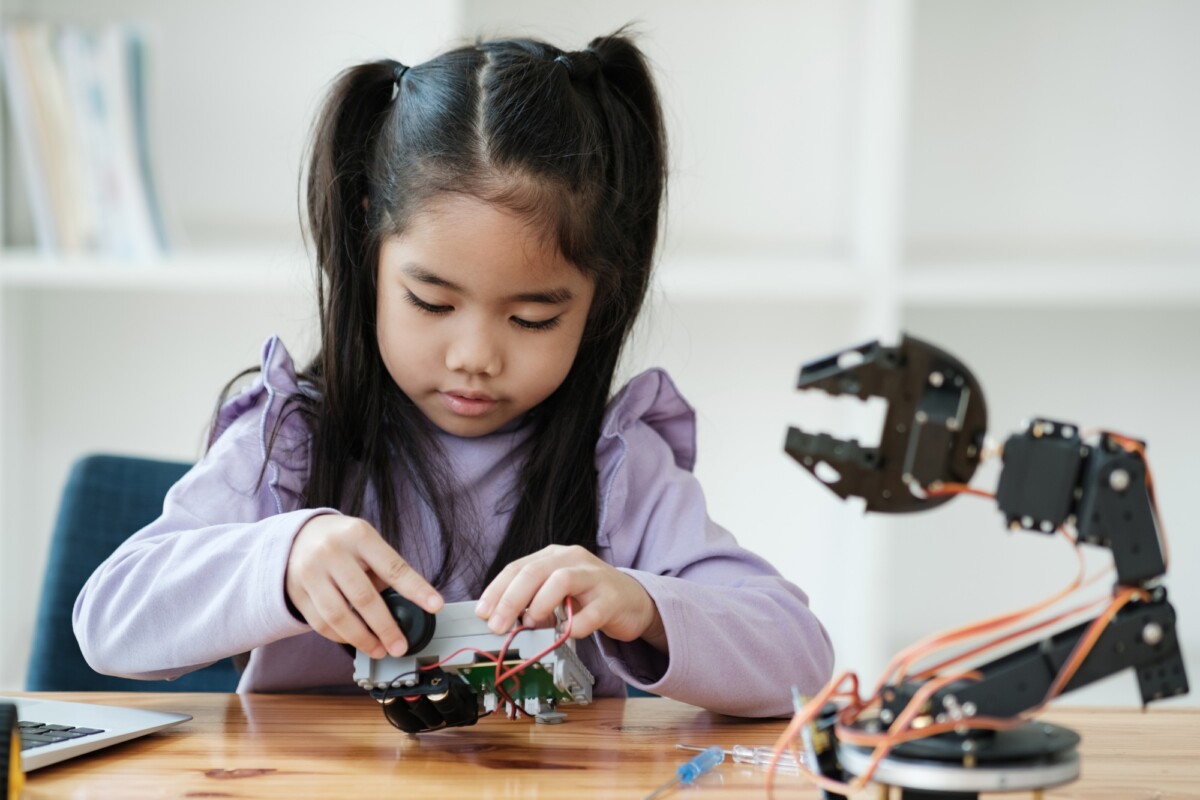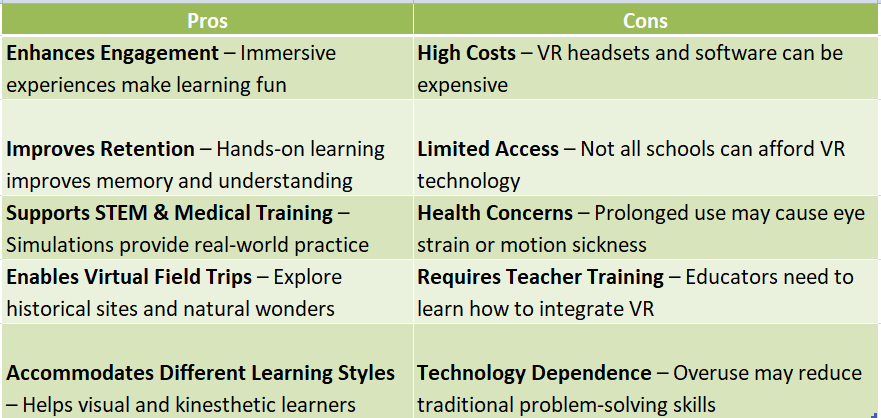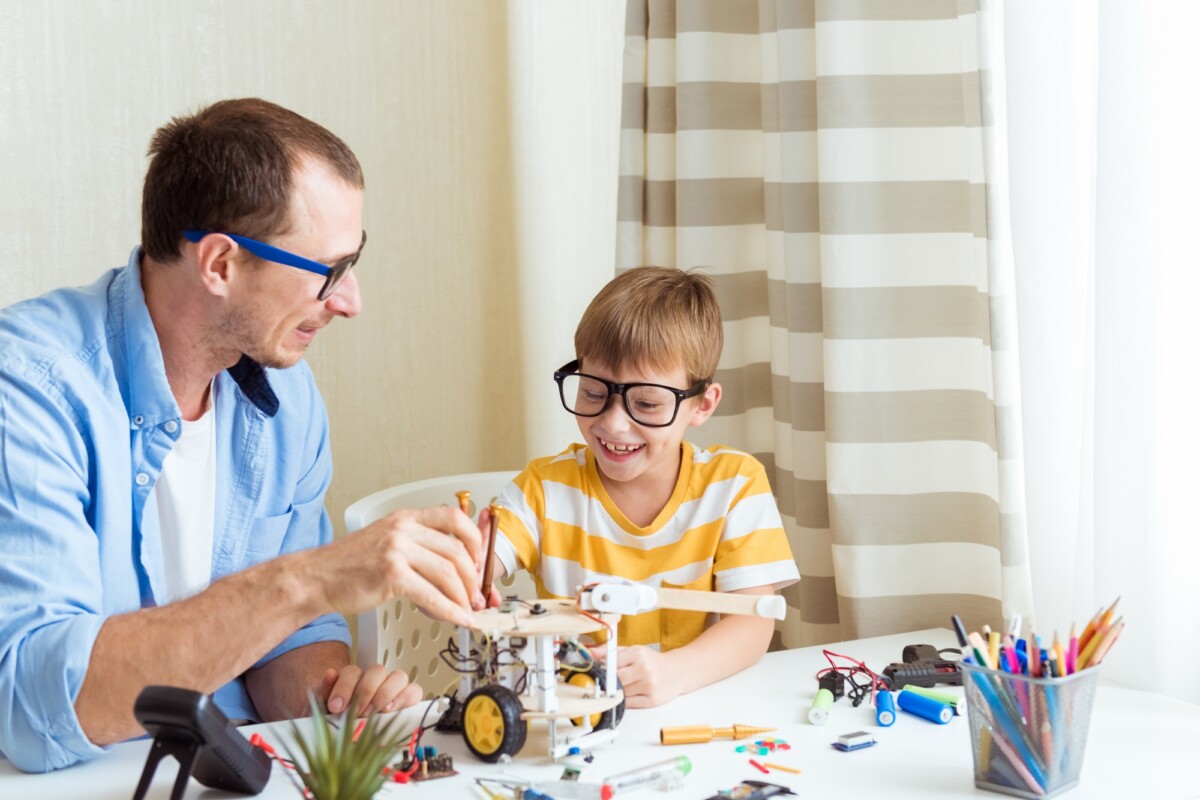
The rise of Virtual Reality in Education marks a significant shift in how students engage with learning materials. By immersing learners in interactive environments, VR transforms traditional educational experiences into dynamic explorations. This technology not only captivates students’ attention but also enhances their understanding of complex concepts.
Engaging Learning Experiences
Virtual Reality allows students to experience lessons in a hands-on manner. Imagine exploring ancient civilizations or conducting virtual science experiments without leaving the classroom. This immersive approach fosters deeper connections with the material, making learning more memorable and effective.
Benefits of VR in Education
- Enhanced Engagement: Students are more likely to participate actively when lessons are interactive.
- Real-World Applications: VR provides simulations that prepare students for real-life scenarios, especially in fields like medicine and engineering.
- Personalized Learning: With VR, educators can tailor experiences to meet individual learning needs, accommodating various learning styles.
As we explore how can students use AI in school, it’s clear that combining these technologies can further enrich the educational landscape. AI can analyze student performance and suggest personalized VR experiences, making learning even more effective. This synergy is crucial, especially when considering why STEM education is vital for future careers.
Unlock your potential with online degrees—Learn more!
How Virtual Reality Enhances Engagement and Retention

Virtual Reality (VR) is revolutionizing the way we approach education, making learning more immersive and engaging. By simulating real-world environments, VR allows students to experience concepts firsthand, enhancing their understanding and retention. This innovative technology is particularly beneficial in subjects like science, history, and art, where experiential learning can significantly deepen comprehension.
Immersive Learning Experiences
- Real-World Simulations: VR provides students with the opportunity to explore complex environments, such as ancient civilizations or intricate biological systems, fostering a deeper connection to the material.
- Interactive Learning: With VR, students can interact with 3D models, conduct virtual experiments, and participate in simulations, making learning more dynamic and enjoyable.
Improved Focus and Motivation
- Reduced Distractions: The immersive nature of VR helps students concentrate better, minimizing distractions often found in traditional classrooms.
- Increased Motivation: Engaging with content in a virtual space can spark curiosity, encouraging students to delve deeper into subjects like STEM education, which is crucial for developing future innovators.
Incorporating AI alongside VR can further enhance learning. How can students use AI in school? AI tools can personalize learning experiences, providing tailored feedback and resources. This combination of technologies not only boosts engagement but also prepares students for a tech-driven future, making education more relevant and effective.
Can Virtual Reality Cater to Different Learning Styles?
Virtual Reality (VR) is revolutionizing the educational landscape by providing immersive experiences that cater to various learning styles. As educators explore the potential of Virtual Reality in Education, they discover that it can enhance engagement and retention, making learning more effective and enjoyable for students. This technology not only captivates learners but also accommodates diverse educational needs.
Virtual Reality offers unique advantages for different types of learners. Here’s how it aligns with various learning styles:
- Visual Learners: VR provides stunning visuals that help these learners grasp complex concepts through simulations and 3D models.
- Auditory Learners: With interactive audio elements, VR can enhance understanding through narrated instructions and discussions.
- Kinesthetic Learners: VR allows hands-on experiences, enabling students to practice skills in a safe environment, which is crucial for subjects like science and engineering.
- Social Learners: Collaborative VR environments foster teamwork, allowing students to work together on projects, enhancing their communication skills.
By integrating VR into the curriculum, educators can address the question, How Can Students Use AI in School? AI can complement VR by personalizing learning experiences based on individual progress, making education more tailored and effective. Ultimately, this synergy supports the growing emphasis on Why STEM Education?, as it prepares students for future careers in technology-driven fields.
Exploring Real-World Applications of Virtual Reality in Classrooms
Virtual Reality (VR) is revolutionizing the way we approach education, making learning more immersive and engaging. By simulating real-world environments, VR allows students to experience concepts firsthand, enhancing their understanding and retention. This innovative technology is not just a trend; it’s reshaping the educational landscape.
Engaging Learning Environments
- Interactive Simulations: Students can explore historical events or complex scientific processes in a virtual setting.
- Safe Learning Spaces: VR provides a risk-free environment for students to experiment and learn from mistakes without real-world consequences.
Enhancing STEM Education
- Why STEM Education?: Integrating VR into STEM subjects makes abstract concepts tangible, fostering a deeper understanding.
- Collaboration Opportunities: Students can work together in virtual labs, promoting teamwork and problem-solving skills.
How Can Students Use AI in School?
- Personalized Learning: AI can tailor VR experiences to meet individual learning needs, ensuring every student progresses at their own pace.
- Data-Driven Insights: Educators can analyze student interactions in VR to identify strengths and areas for improvement, enhancing overall learning outcomes.
Unlock your potential with online degrees—Learn more!
What Are the Challenges of Implementing Virtual Reality in Education?
As Virtual Reality (VR) continues to reshape learning experiences, educators face several challenges in its implementation. While VR in education offers immersive and engaging experiences, integrating this technology into existing curricula requires careful consideration and planning.
Cost and Accessibility
- High Initial Investment: The cost of VR equipment can be prohibitive for many schools.
- Limited Access: Not all students have equal access to VR technology, which can create disparities in learning opportunities.
Training and Support
- Teacher Training: Educators need proper training to effectively use VR tools in their teaching.
- Technical Support: Ongoing technical support is essential to troubleshoot issues and maintain equipment.
Curriculum Integration
- Aligning with Standards: Ensuring VR content aligns with educational standards can be complex.
- Balancing Traditional Methods: Finding the right balance between VR and traditional teaching methods is crucial for effective learning.
In addition, as we explore how can students use AI in school, it’s vital to recognize that VR can complement AI tools, enhancing personalized learning experiences. Ultimately, addressing these challenges is essential for maximizing the benefits of VR in education and promoting why STEM education is critical for future success.
How ‘CollegeAndTuition.com’ is Pioneering Virtual Reality Solutions for Educators
Virtual Reality (VR) is revolutionizing the way we approach education, offering immersive experiences that enhance learning. As educators seek innovative methods to engage students, VR stands out as a powerful tool. It allows learners to explore complex concepts in a dynamic environment, making education more interactive and enjoyable.
Engaging Learning Environments
- Immersive Experiences: VR transports students to different worlds, from historical events to scientific phenomena.
- Real-World Applications: Students can practice skills in a safe, controlled setting, bridging the gap between theory and practice.
Enhancing STEM Education
Why STEM education? It prepares students for future careers in technology and science. VR can simulate experiments and engineering challenges, making these subjects more accessible and exciting. By integrating VR, educators can foster a deeper understanding of complex STEM concepts, encouraging students to think critically and creatively.
AI Integration in Education
How can students use AI in school? AI tools can personalize learning experiences, adapting to each student’s pace and style. When combined with VR, AI can create tailored educational journeys, ensuring that every learner receives the support they need to thrive. This synergy between AI and VR is paving the way for a new era in education.
The Future of Learning: What’s Next for Virtual Reality in Education?
Virtual Reality (VR) is revolutionizing the educational landscape, offering immersive experiences that traditional learning methods simply can’t match. As we explore the future of learning, it’s clear that VR in education is not just a trend; it’s a transformative tool that enhances engagement and retention. Students can now step into virtual worlds, making complex subjects more accessible and enjoyable.
Enhanced Engagement and Interaction
With VR, students can interact with 3D models and simulations, bringing abstract concepts to life. Imagine a biology class where students can explore the human body from the inside out! This level of engagement fosters curiosity and a deeper understanding of subjects, particularly in STEM education.
Personalized Learning Experiences
Virtual Reality allows for tailored learning experiences. Students can learn at their own pace, revisiting challenging concepts in a virtual environment. This customization is essential as it caters to diverse learning styles, making education more inclusive and effective.
How Can Students Use AI in School?
Integrating AI with VR can further enhance learning. For instance, AI can analyze student performance in real-time, adapting VR scenarios to meet individual needs. This synergy not only supports personalized learning but also prepares students for a future where technology plays a crucial role in education.
Unlock your potential with online degrees—Learn more!
FAQs
-
What is Virtual Reality (VR) in education?
VR in education involves using immersive technology to create interactive learning experiences, allowing students to explore virtual environments. -
How does VR benefit education?
VR enhances engagement, improves retention, provides hands-on experiences, and allows students to explore concepts that are difficult to visualize in traditional learning. -
At what educational levels can VR be used?
VR can be used at all levels, from preschool to higher education and professional training. -
What subjects can benefit from VR learning?
VR is useful in science, history, geography, mathematics, engineering, art, medical training, and more.





